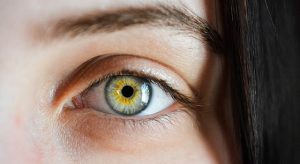9 Ways Eyes Change With Age
As you age, you may discover that your vision just isn’t as sharp as it used to be. Vision changes can occur over time and cause you to wonder if what you are experiencing is normal or if you should schedule an appointment with your eye doctor.
Read MoreLazy Eye Success
Author: Dr. Randy Schulman EyeCare Associates, CT “Vision therapy has helped me ride my bike, and helps me for school in math, writing, and reading. I
Read More“Lazy Eyes” Are Not Lazy
If a lazy eye is not really ‘lazy’, then what is it exactly? Lazy eye (amblyopia) is the most common neuro-developmental vision condition, affecting up
Read MoreSixth Nerve Palsy
Sixth nerve palsy, also called abducens nerve palsy, is a rare condition that occurs when the sixth cranial nerve, also called the abducens nerve, becomes damaged.
Each year, around 11 in 100,000 people are diagnosed with sixth nerve palsy.
The sixth cranial nerve is responsible for sending signals to the lateral rectus muscle. When the sixth cranial nerve becomes damaged, it prevents the lateral rectus muscle from operating and results in an inward eye turn (esotropia) and double vision.
Read MoreThird Nerve Palsy
Third Nerve Palsy, also called Oculomotor Palsy, occurs when the third cranial nerve becomes injured or diseased.
The third cranial nerve controls the actions of four external eye muscles. As the third cranial nerve controls many of the eye’s muscles and functions, palsy of this nerve can result in complete or partial paralysis of the eye.
Unequal Pupil Sizes (Anisocoria)
Different sized pupils could indicate a serious health issue requiring urgent medical care. The pupil is the black hole in the center of the iris,
Read MorePtosis: Why Is My Eyelid Drooping?
What is ptosis? Ptosis, commonly referred to as a droopy eyelid, occurs when the upper eyelid droops down over the eye. A droopy eyelid can
Read More






